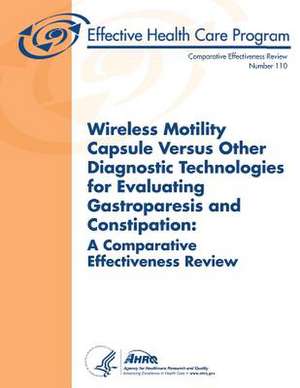Wireless Motility Capsule Versus Other Diagnostic Technologies for Evaluating Gastroparesis and Constipation
Autor U. S. Department of Heal Human Services, Agency for Healthcare Resea And Qualityen Limba Engleză Paperback
Preț: 139.32 lei
Preț vechi: 146.65 lei
-5% Nou
Puncte Express: 209
Preț estimativ în valută:
26.66€ • 28.51$ • 22.23£
26.66€ • 28.51$ • 22.23£
Carte disponibilă
Livrare economică 28 martie-11 aprilie
Preluare comenzi: 021 569.72.76
Specificații
ISBN-13: 9781490574257
ISBN-10: 1490574255
Pagini: 148
Dimensiuni: 216 x 279 x 8 mm
Greutate: 0.36 kg
Editura: CREATESPACE
ISBN-10: 1490574255
Pagini: 148
Dimensiuni: 216 x 279 x 8 mm
Greutate: 0.36 kg
Editura: CREATESPACE
